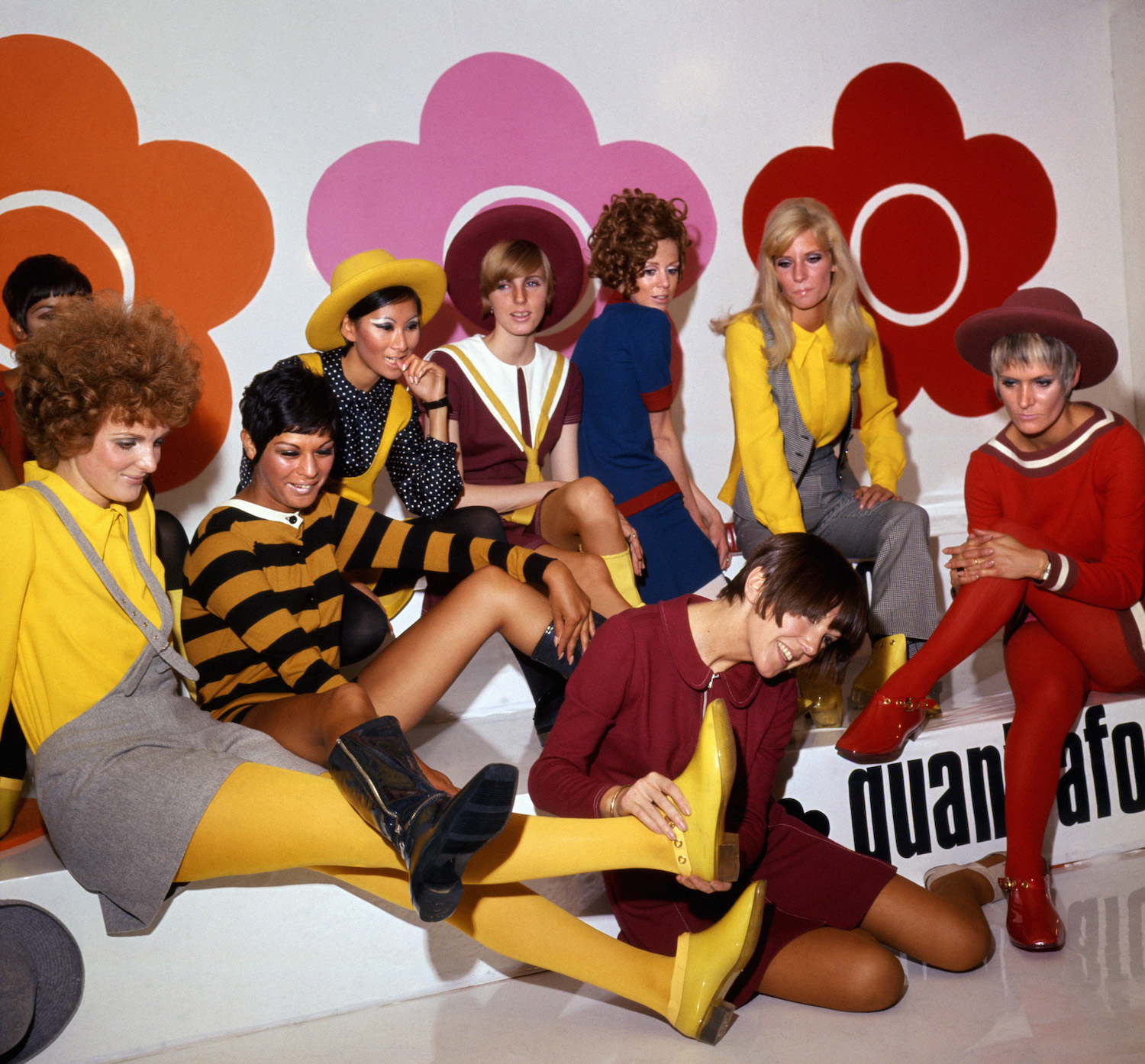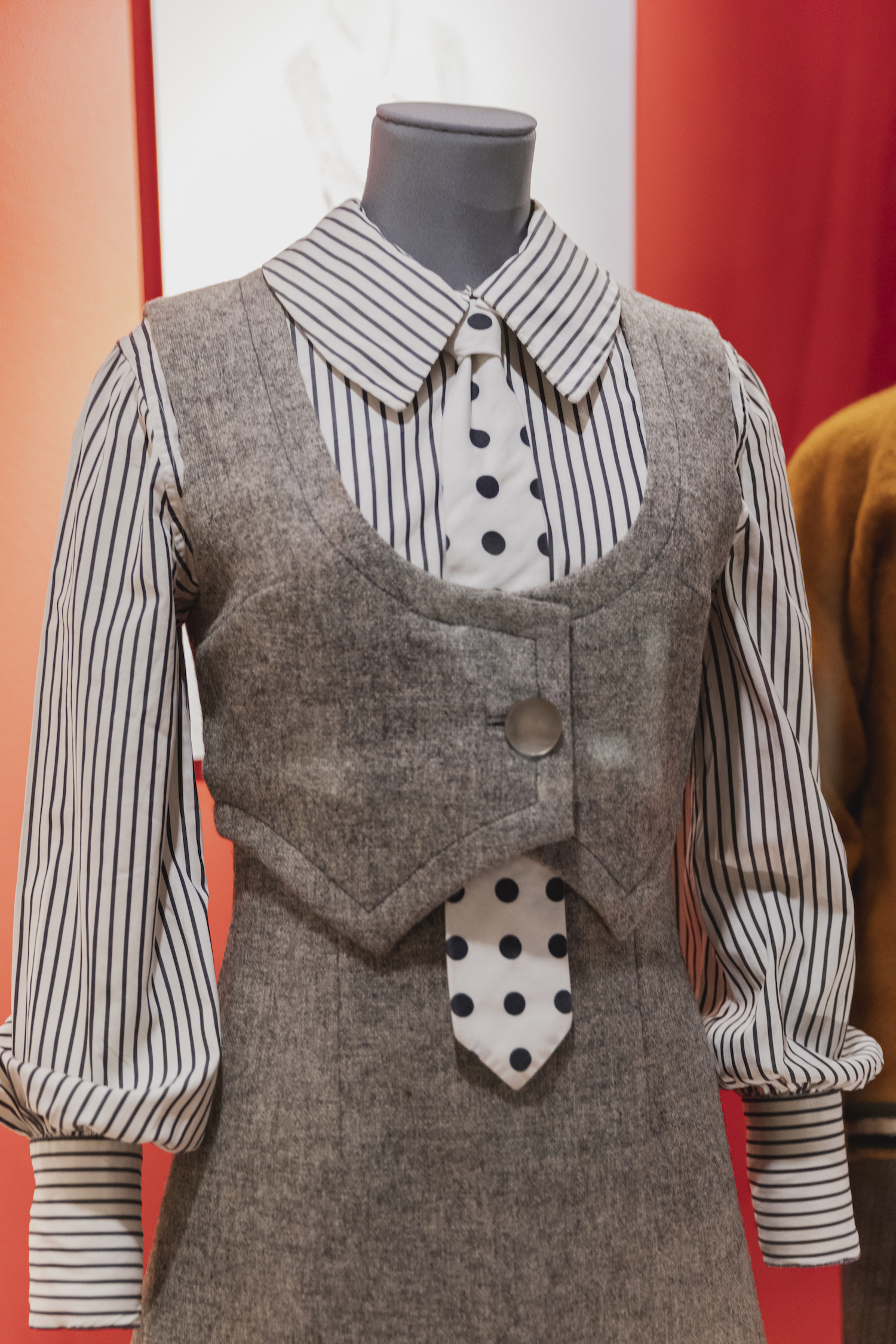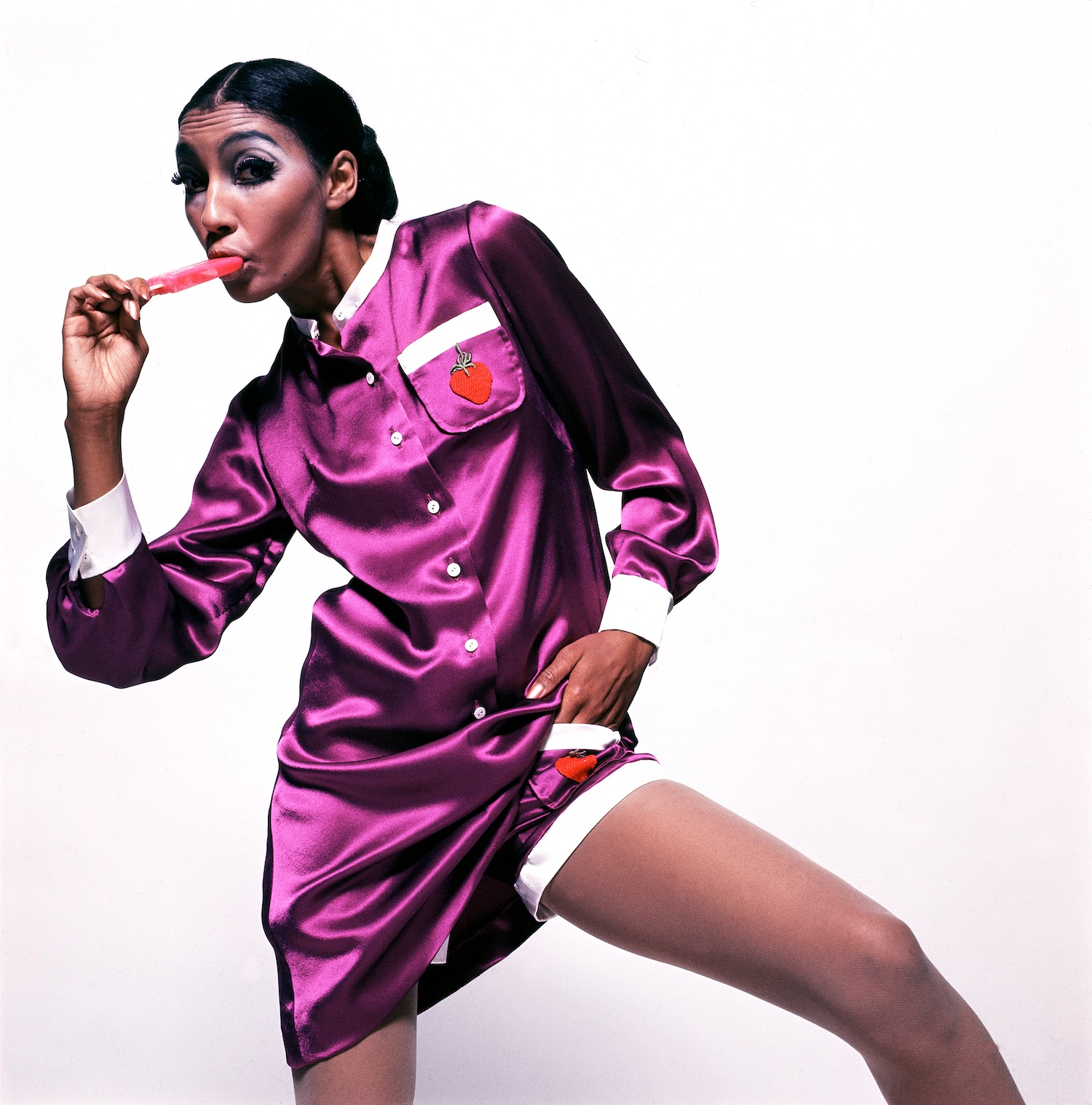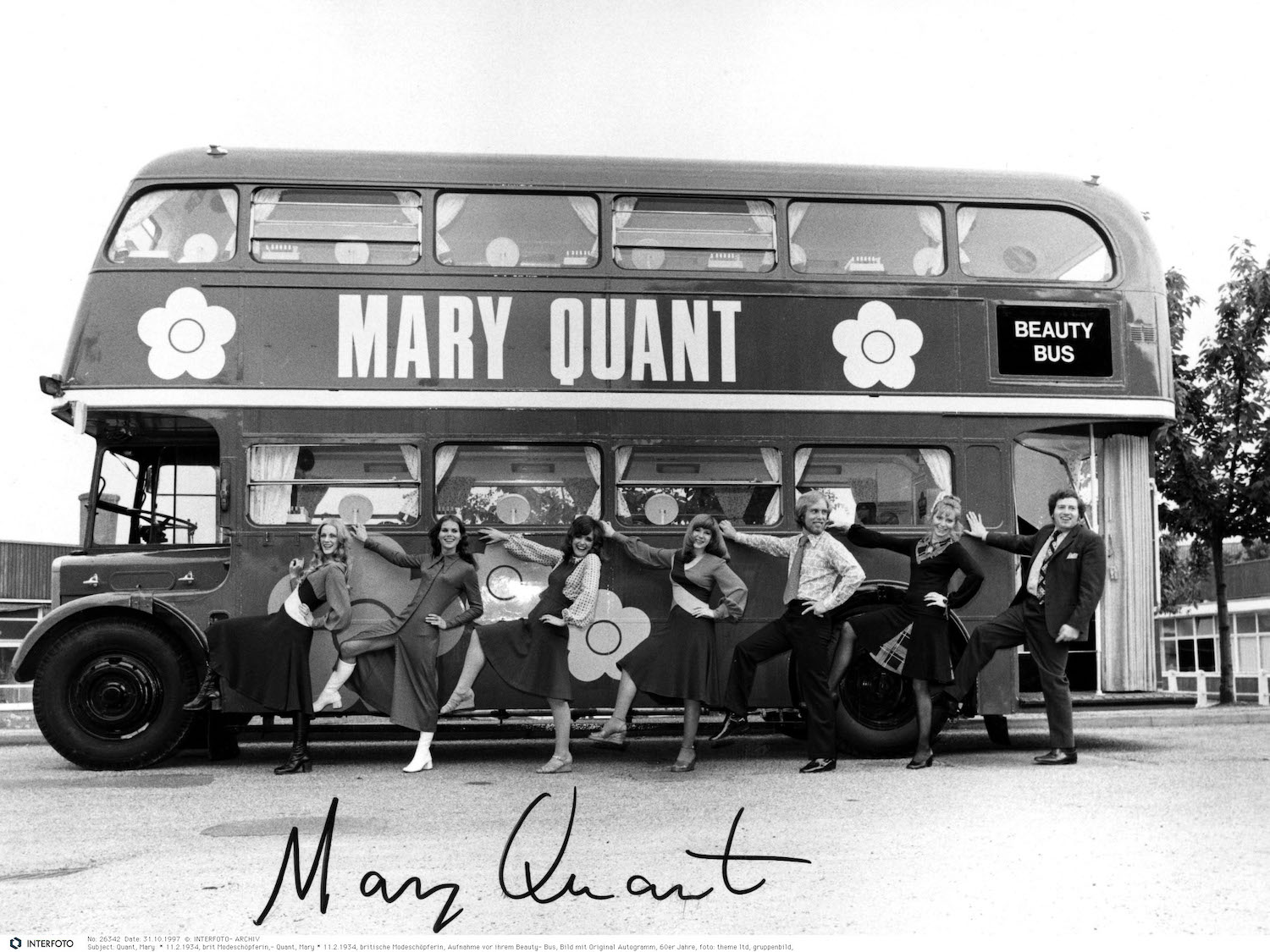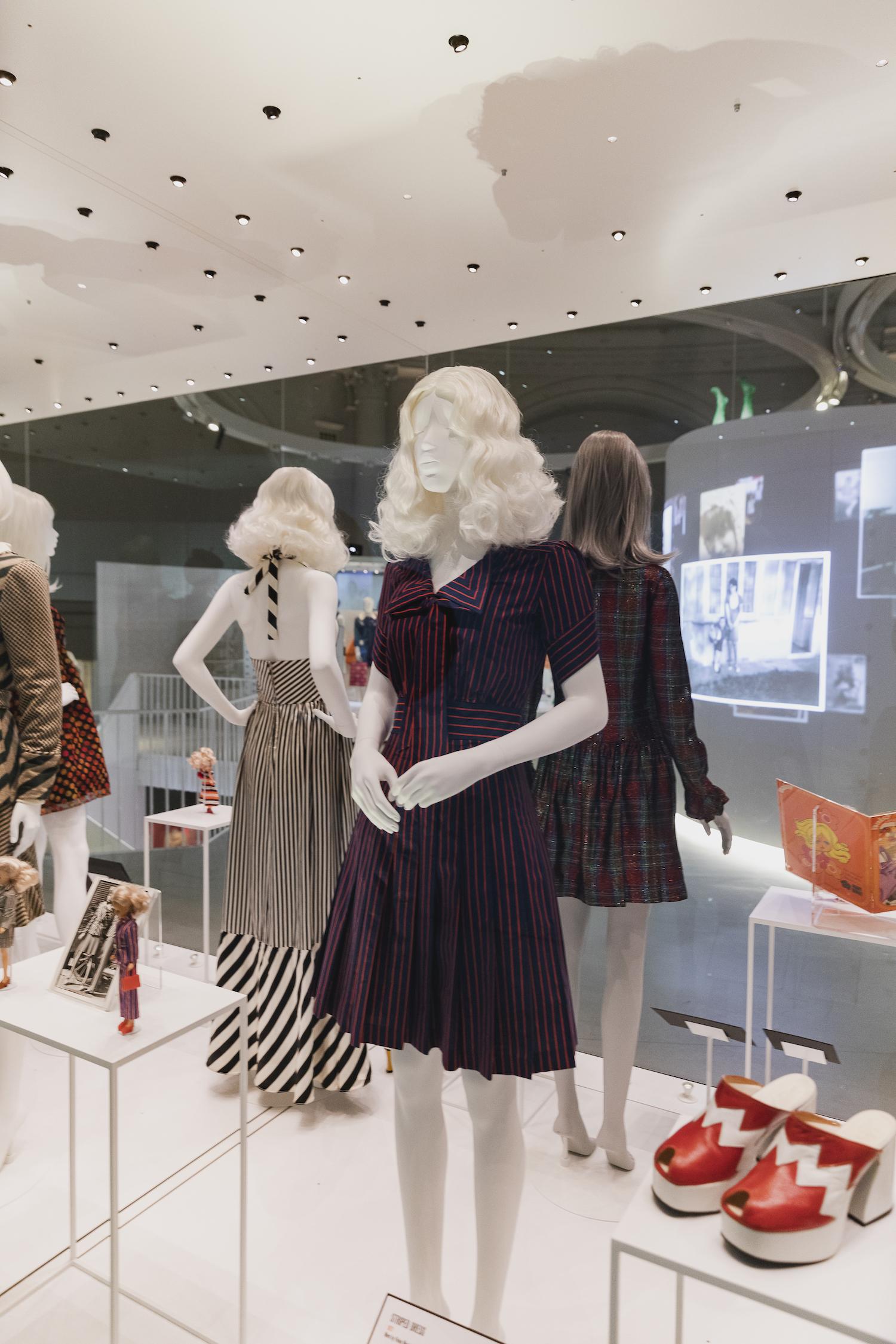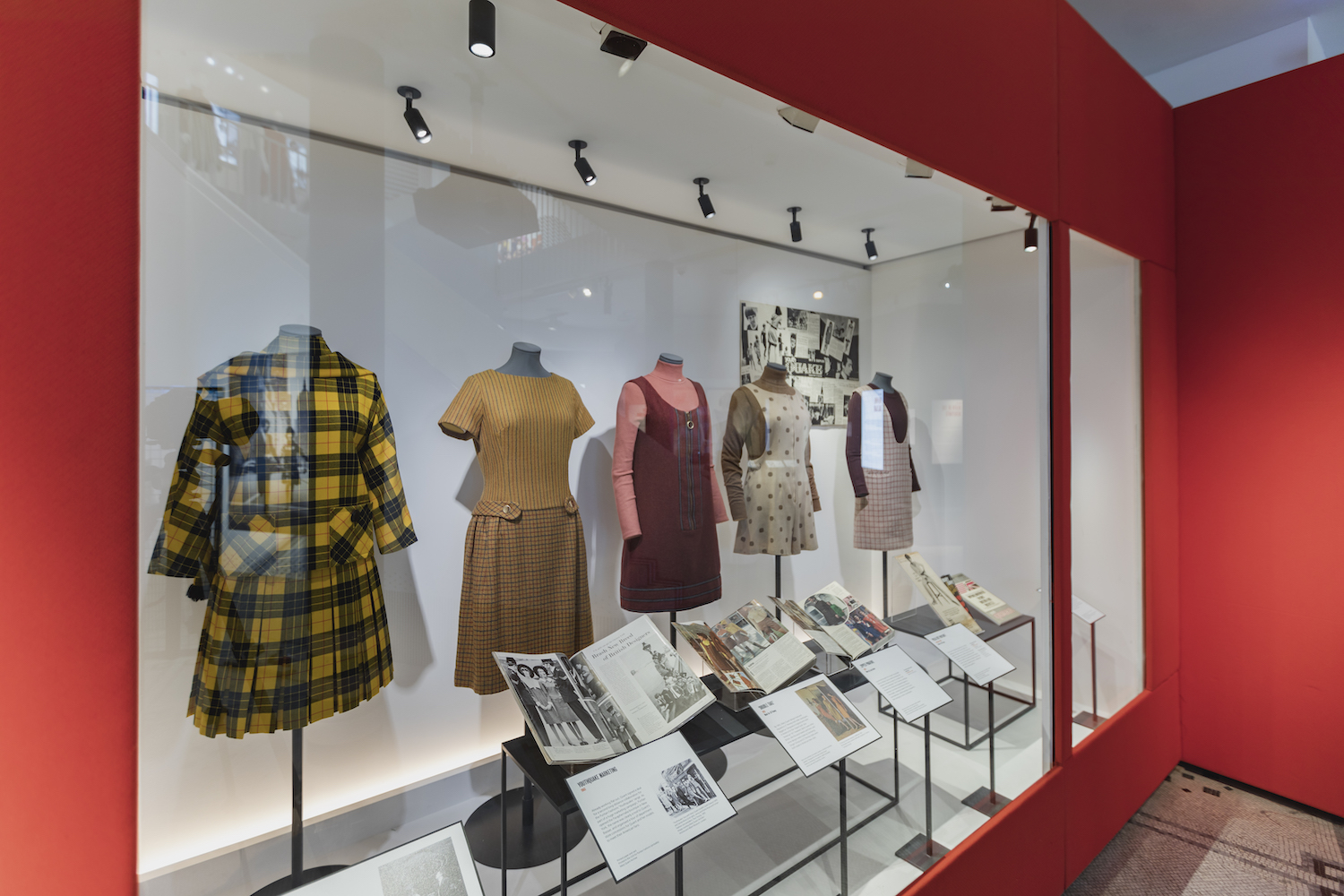To celebrate the launch of our competition to win tickets to the V&A’s retrospective of the life and works of Mary Quant, GFW contributor Faith Richardson gives us a brief history of one of Britain’s iconic designers, whose influence can still be seen almost 70 years later. Head to our Instagram to find out how you can win tickets!
When you think of Mary Quant, your mind automatically goes to the uprising of the miniskirt. The two are synonymous, and although she created thousands of other iconic designs and styles, there are very few sartorial moments that did as much for women’s liberation as the rising hemlines of the 60s.
Quant first burst onto the scene in 1960s with the opening of Bazaar, her shop in Kings Road, where she sold out of her now-iconic miniskirts in a matter of days. Whilst the creation of the miniskirt is difficult to attribute to just one designer, none managed to market it quite like Quant did. With accessible price points, women who had been otherwise priced out of high end designers like Dior and Chanel now has access to an exciting new way of dressing.
Quant liberated women from decades of below-the-knee hemlines which aligned perfectly with the 60s feminist movement. She famously claims to have designed the miniskirt because she wanted something women could run for the bus in, to move in and feel free and unrestricted, and this salvation from stuffy skirt lengths and overly fitted dresses surely helped women everywhere to seek the same sort of freedom in their day-to-day lives, too.
This is how Mary Quant and her famous miniskirt became as much about politics as it did about fashion. Having freed women from the rules of how young ladies ‘should’ dress, prolific feminist activists began wearing the miniskirt on the frontlines of marches and protests as they demanded control over things such as workplace inequality, birth control and the freedom to be in charge of their home life, and it brought about a definitive symbol of a new attitude of women everywhere.
Although the 60s ended, Quant’s status as designer of female power didn’t stop there. The miniskirt, hot pants and her use of colour and style can be traced clearly through every decade as a symbol of freedom and empowerment.
They were adopted by punks in the 70s as they protested the government and became part of the iconic power suit of the 80s as women began to take charge in offices and meeting rooms around the world.
In the 90s, the Spice Girls were known for their micro minis as they high kicked their way into pop culture with their own personal brand of girl power. Now, decades after Quant first appeared on the King’s Road, she is still as much of a feminist icon as ever. The mini skirt is still worn by women who embrace their bodies and refuse to let traditional beauty standards dictate what they can or can’t wear.
It is clear that 50 years on, Quant’s legacy and liberation of women is still as prevalent now as it was back then. In the current climate of #MeToo and Times Up, we need Quant as much as we did in the 60s to remind us of freedom, pushing back against a broken and repressive system, and that great things happen when women take charge.




